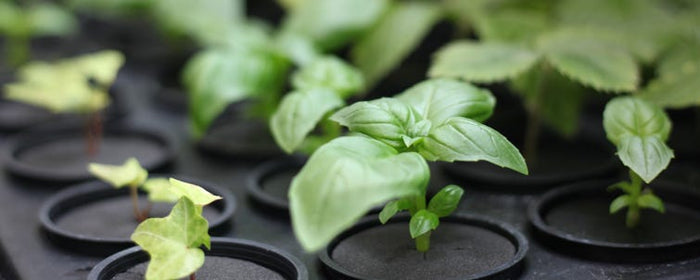
VPD in a Nutshell - Master your Humidity
They say environment is everything. That’s because it is!
No matter what nutrients & boosters you use, ultimately the way plants use them is regulated by your environment.
The problem is, the ideal humidity depends on lots of things – your air temperature, leaf temperature, stage of growth & time of day (day or night).
This makes it difficult to know what humidity to aim for at any given time.
The solution? VPD…
What’s VPD?
VPD = vapour pressure deficit.
Your VPD combines your temperature, humidity & leaf temperature into one reading. You use this to determine how well plants are going to transpire.
The rate of transpiration directly impacts nutrient absorption, translocation & growth. As plants lose water through leaves, they absorb water (and nutrients) via roots. Any nutrients join the transpiration stream so they can be deposited where they’re needed.

A Low VPD
- More moisture in the air
- Slower transpiration
(smaller gap between moisture levels in leaves and air)

A High VPD
- Less moisture in the air
- Faster transpiration
(bigger gap between moisture levels in leaves and air)
Target VPD
Here’s what you should aim for:

Early Veg: 0.4 - 08 Kpa
Plants are delicate and don’t have the roots needed to replace the water they lose. Go for a lower VPD to slow transpiration.

Late Veg / Early Flowering: 0.8 - 1.2 Kpa
Plants have more leaves and more roots. Now is the time to start ramping up your VPD to increase nutrient uptake, translocation & growth.

Late Flowering: 1.2 - 1.6 KpA
Plants are well established and extra water uptake is helpful. You will need to maintain a drier environment to reduce the risk of bud rot. So you’ll want to have a slightly higher temperature with a lower humidity to achieve this VPD.

Why use VPD?
It really lets you micro-manage nutrient uptake & growth. Growers use VPD to increase their yield and even shorten their cycle.

Optimise nutrient uptake, Growth & Yield
If plants lose too much water, they replace it via roots. At best, they’ll end up underfed (too much water, not enough nutrients). At worst, as they absorb too much water from your nutrient solution. When this happens, your nutrient strength increases. This can later cause toxicity.
It is equally problematic if plants don't transpire enough- nutrient uptake and translocation slow.
To ensure plants absorb nutrients and grow at the right rate, control transpiration with your VPD.

Helps prevent rot
In flowering you need to reduce your humidity to reduce the risk of rot. You don’t have to sacrifice uptake – simply monitor your VPD and reduce your temperature as you need to.

Prevent Stress
If plants transpire too much, they lose too much and become stressed. Unrooted cuttings can fail.
How to use VPD
To truly monitor your VPD, you need to constantly monitor the temperature & humidity at leaves. This is very manual. You’ll need to take lots of separate readings and do a fair bit of maths. You also won’t be able to respond to slight temperature fluctuations.
We recommend
To make life easy, we recommend using a G.A.S Intelligent Humidity Controller and G.A.S SonicAir Pro Humidifier.
To optimise your VPD, the controller determines and maintains your ideal humidity, based on:
- air temperature
- stage of growth
- plant temperature
- light cycle (on / off)
You don't have to worry about temperature fluctuations messing with transpiration, either.

If you want to take your leaf temperature into account, you will need to enter a ‘leaf temperature offset’. This tells you how much lower your leaf temperature is than your grow room temperature. We recommend an offset of ‘-1’ for small plants, and ‘-2’ for bigger plants. This isn’t exact, but in tests it’s proven to work perfectly. If you want to be more precise, you can use a separate infrared thermometer to scan the top of your plant canopy.
 Download PDF
Download PDF
Interested in VPD? Download the printable PDF!
You don't have to worry about temperature fluctuations messing with transpiration, either.




